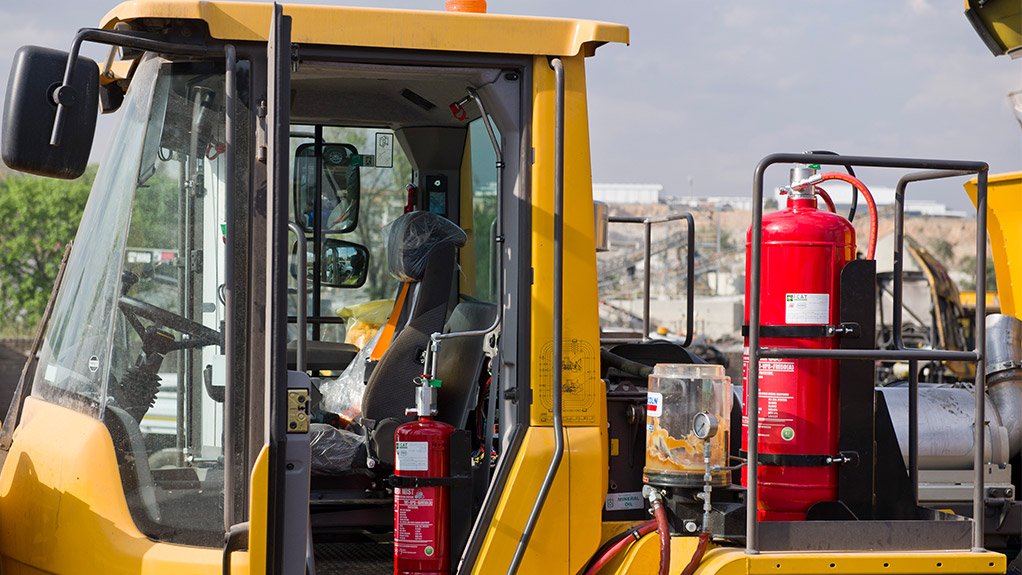Fire incidents in mining operations occur every day because of poor maintenance and components that have reached the end of their life span, says environmental solutions company I-CAT fire division head Andro Gibhard.
However, he says vehicles catching fire – the most common fire incident in underground mining – can be attributed to the harsh environment and the materials being handled, such as hot coal that can also create fire.
“The fact that a mining vehicle is fitted with a fire suppression system is meaningless if it is not accompanied by an action plan in the event of such an incident, and proper training of operators on how to respond to any fire incidents.”
He says, in some cases, fire incidents were caused by substandard operator practices or because the fire suppression system was not properly installed, as the suppression hoses allegedly chafed against the fuel or hydraulic lines, causing them to rupture and spray fuel on hot engine surfaces.
Gibhard says mining companies can put preventive measures in place, such as a good maintenance regime, implement proactive approaches and install effective fire-detection and suppression systems that can be used to prevent damage. Detrimental consequences, owing to these measures being neglected or not implemented properly, could lead to damaged equipment, which, in turn, could have a far greater impact on production, and ultimately lead to loss of life, he adds.
T-Rotor Technology Vehicle Protection System
Gibhard explains that the I-CAT T-Rotor Technology Vehicle Protection System is an internationally patented, low-pressure foam mist system that extinguishes flames and cools the surface area to reduce the chances of a fire reigniting.
A conventional fire suppression system used only powder to extinguish fire and the heat on the surface remained, he adds.
I-CAT is supplying the system to various mining groups on the continent, with some of the largest installations for diversified mining company Vale.
Gibhard adds that the technology provides protection for not only vehicle systems but also conveyor belts, hydraulic power packs, transformers and generators. “The T-Rotor Technology Vehicle Protection System is a stored-water pressure system, which means that an external water connection is not needed for it to be operational.”
He emphasises that fire suppression system suppliers need to improve their products constantly to ensure that they provide the best possible solution for the specific risk. “With our T-Rotor technology, we provide clients with various options to mitigate all the identified risks, even protecting the operator inside the cab.”
Gibhard believes that a major cause of fire in the mining industry is that miners often install fire suppression systems simply to comply, without a proper understanding of the system or its specific requirements.
Most procurement decisions about which fire suppression systems to install are based on cost, which often means that the cheapest system is installed, and not necessarily the system that is most suitable for a particular application, he points out.
Gibhard therefore recommends the conduct of a formal risk assessment agreed upon by all stakeholders, including the client, consultant and service provider, as one mining vehicle might have a totally different risk assessment in different operating environments.
“A major factor easily overlooked is that fire suppression systems are generally not installed to protect the vehicles or equipment, but to save the lives of the operator and those around the vehicle. “Therefore, it is important to conduct such an assessment,” he concludes.
Edited by: Mia Breytenbach
Creamer Media Deputy Editor: Features
EMAIL THIS ARTICLE SAVE THIS ARTICLE
ARTICLE ENQUIRY
To subscribe email subscriptions@creamermedia.co.za or click here
To advertise email advertising@creamermedia.co.za or click here













